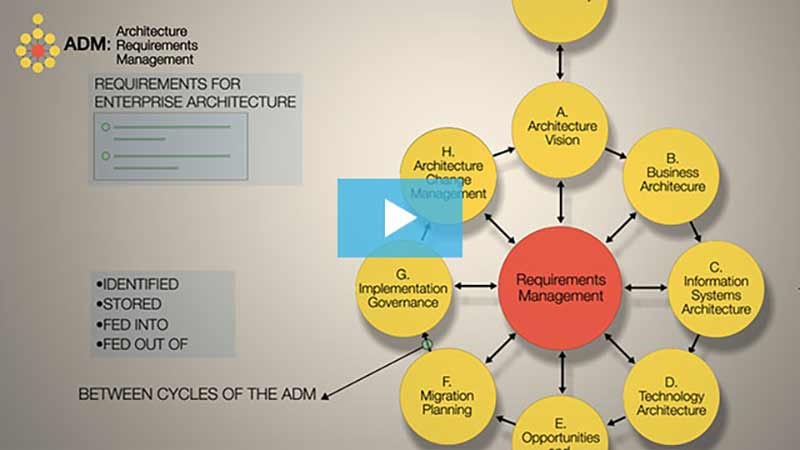Now that we have taken you through Phases A-H, we arrive at Architecture Requirements Management which takes place throughout the TOGAF ADM Cycle.
Requirements are produced, analyzed and reviewed in each of the phases of the ADM. The Requirements Management Phase describes the process of managing these architecture requirements throughout the ADM.
The Requirements Management Phase is central to the ADM – which is why it is shown at the centre of the ADM crop circle diagram. This Phase describes a process for Requirements Management, and how that process links to the other phases of the ADM.
Requirements are not static – they dynamically evolve as we complete each Phase of the ADM, and also between cycles of the ADM. Requirements for enterprise architecture, and subsequent changes to those requirements, are identified, stored, and fed into and out of the relevant ADM phases, and also between cycles of the ADM.
Dealing with changes in requirements is crucial. Architecture deals with uncertainty and change - the "grey area" between what stakeholders expect and what is possible! Architecture requirements are therefore invariably subject to change.
Moreover, architecture deals with many drivers and constraints which are beyond the control of the enterprise – such as changing market conditions or new legislation - which can produce changes in requirements in an unforeseen manner.
TOGAF emphasizes that the Requirements Management process itself doesn’t dispose of, address, or prioritize requirements, as this is done within the relevant phase of the ADM. The Requirements Management Phase is merely the process for managing requirements throughout the overall ADM.
